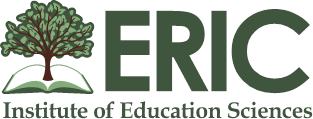Teachers' Views on Using the Writing Process Approach to Improve ESL Learners' Writing Skills
Keywords:
Process approach; controlled and guided composition; genre approach; brainstorming.Abstract
Even though ESL students in Saudi universities are given intensive courses in writing essays, they are still unable to improve their English writing skills and find difficulty completing their writing. Finding an appropriate approach to teaching such as the process approach may or may not help to solve their writing problems effectively. This study aims to find out the perceptions and opinions of Saudi English teachers towards using the process approach of writing inside the classrooms. The study found that it is important to teach and motivate students to write through processes such as prewriting activities, drafting, revising, and editing. The majority of the participants thought that the students writing process strategy helps students to write critically and analytically. This can be noticed when students practice some activities and strategies that help them write critically such as brainstorming their minds, discussing with peers, collecting ideas, selecting appropriate vocabulary, and making outlines.
References
Badger, R. & White, G. (2000). A process genre approach to teaching writing, ELT Journal, 54 (2), 153-160.
Belinda, H. (2006). Effectiveness of using the process approach to teach writing in six Hong Kong primary classrooms. Perspectives: Working Papers in English and Communication, 17 (1).
Chang, K; Sung, Y & Zheng, J (2007). Hypermedia authoring with writing process guidance. British Journal of Educational Technology, 38 (5), 851–860.
Charles, M. (1990). Responding to Problems in written English using a student self-monitoring technique. ELT Journal, 44 (4), 286-93.
Cohen, A., & Cavalcanti, M. (1990). Feedback on written compositions: Teacher and student verbal reports. In B. Kroll (Ed.), Second language writing: Research insights for the classroom (pp. 155–77). Cambridge: Cambridge University Press.
El-Koumy, A. (2004). Effect of Self-Assessment of Writing Process Versus Products on EFL Students Writing. Education Resources Information Center (ERIC), USA. https://ssrn.com/abstract=2365346
Flower, L (1989). Problem-Solving Strategies for Writing. 3rd Edition. Harcourt Brace Jovanovich, Chicago, IL.
Flower, L and Hayes, J (1981). A Cognitive Process Theory of Writing. College Composition and Communication, 32 (4), 365-387.
Ibrahim, H. (2006). The Effect of Using the Reading for Writing Approach on Developing the Writing Ability of Egyptian EFL Learners and Their Attitudes Towards Writing Scientific methodologies in educational research. https://files.eric.ed.gov/fulltext/ED498363.pdf
Gebhard, J. (2000). Teaching English as a Foreign or Second Language. The University of Michigan Press.
Hedge, T. (2000). Teaching and Learning in the Language Classroom. Oxford: Oxford University Press.
Hendrickson, J. (1978). Error correction in foreign language teaching: recent theory, research and practice. The Modern language Journal, 62(8), 387-398. https://www.jstor.org/stable/326176?seq=1
Hewings, A. & Curry, M. (2003). Teaching Academic Writing: A toolkit for higher Education. Rutledge, London and New York.
Hyland, K. (2002). Teaching and Researching Writing. Pearson Education
Hyland, K. (2003). Second Language Writing. Cambridge University Press
Janet, E (1971). The Composing Processes of Twelfth Graders. National Council of Teachers of English, Urbana, IL
Jones, S. (1982). Attention to rhetorical form while composing in a second language. In V. Flashner C. Campbell, T. Hudson, & J. Lubin (Ed.), Proceedings of the Los Angeles Second Language Research Forum (pp. 130-143). Los Angeles: University of California at Los Angeles. http://www.savap.org.pk/journals/ARInt./Vol.3(2)/2012(3.2-49).pdf
Kay& Dudley-Evans (1998). Genre: what teachers think. ELT Journal, 52 (4), 308–314.
King, R., & Chapman, C. (2003). Differentiated Instructional Strategies for Writing in the Content Areas. Corwin Press, INC
Kroll, B. (2003). Exploring the Dynamics of Second Language Writing. Cambridge University Press
Lee, J & VanPatten, B (1995). Making Communicative Language Teaching Happen. Volume 1: Directions for Language Learning and Teaching. cGraw-Hill, Blacklick, OH
Moran, C. (1981). A model for teacher training programs in the field of writing. Journal of basic Writing, 3(2), 64-78.
Muncie, j (2002). Process writing and vocabulary development: comparing Lexical Frequency Profiles across drafts. System, 30(2), 225–235
Murray, D. (1978). Internal version: a process of discovery In C. Cooper and L. Odell (Eds.) Research on composing, Urbana, Illinois: National Council of Teachers of English.
New, E, (1999). Computer- Aided Writing in French as a foreign Language: A Qualitative and Quantitative Look at the Process of Revision. The Modern Language Journal, 83(1), 80-97.
Raimes, A. (1991). Out of the Woods: Emerging Traditions in the Teaching of Writing. TESOL Quarterly, 25(3), 407-430.
Raimes, A. (1993). Techniques in Teaching Writing. Oxford University Press
Rohman, D. (1965). Pre-Writing the Stage of Discovery in the Writing Process. Critical Theory and the Teaching of Composition, 16 (2), 106- 112
Parks, S.; Huot, D.; Hamers, J. and Lemonnier, F. (2005) ‘‘History of Theatre’’ Web sites: A brief history of the writing process in a high school ESL language arts class. Journal of Second Language Writing, 14 (4), 233–258.
Peacock, C. (1986). Teaching Writing. Library of Congress Cataloguing.
Pincas, A (1882). Teaching English writing. London: MacMillan
Silver, T., & Leki, I. (2004). Family Matters: the influence of Applied Linguistics and Composition Studies on Second Language Writing studies- past, Present and Future. The Modern Language Journal, 88(1), 1-13.
Tribble, C (1996). Writing, Oxford: OUP
Wasson, K (1993). Implementation of a Publishing Center to Enhance the Writing Process for Primary Students. Nova University, Published Dissertation at:
https://files.eric.ed.gov/fulltext/ED359526.pdf
Williams, J. (2003). Preparing to Teach Writing: Research, Theory, and Practice. Lawrence Erlbaum Associates. Third edition
Zamel, V. (1983). The Composing Processes of Advanced ESL Students: Six Case Studies. TESOL Quarterly, 17(2), 165- 188.
Downloads
Published
Issue
Section
License
Copyright (c) 2023 International TESOL & Technology Journal

This work is licensed under a Creative Commons Attribution 4.0 International License.







